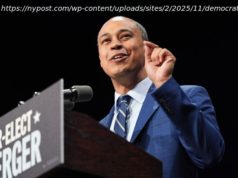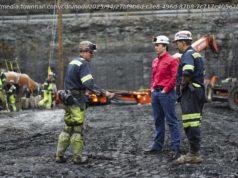As the Fed meets, stocks are having a tantrum over rising interest rates that could result in the deepest sell-off since the Brexit correction.
As the Federal Reserve meets, stocks are having a tantrum over rising interest rates that could lead to the deepest sell-off since the roughly 5 percent decline that followed the Brexit panic of 2016.
The S&P 500 was down 1.6 percent by Tuesday afternoon in its worst two-day pullback since August. Stocks were spooked by a quick jump in interest rates, which pushed the 10-year Treasury yield to 2.72 percent.
The Fed is not expected to raise interest rates at the two-day meeting that ends Wednesday, but it is expected to hike in March and at least two more times this year. Interest rates have been flying on rising expectations for inflation and the idea that central banks are moving away from easy policies, coinciding with plans by the U. S. government to issue a pile of new debt.
The U. S. government makes an announcement on its new Treasury auction sizes Wednesday morning, and that has the potential to drive interest rates even higher if there are any surprises. The Fed releases its statement Wednesday afternoon.
James Paulsen, chief investment strategist at Leuthold Group, said the market has been vulnerable due to high valuations, and now the interest rate rise adds pressure as investors look at alternatives in the higher yielding bond market.
« When you get a market that’s facing several challenges, it’s vulnerable, and anything can be the straw that broke the camel’s back, » he said.
The stock market was also dragged down Tuesday by a sell-off in health-care shares, triggered after the heavy hitting trio of Amazon, Berkshire Hathaway and J. P. Morgan Chase said they will partner to find a better, cheaper solution for their employees’ health care. the health-care sector was the day’s worst performer, down 2.1 percent.
The S&P 500 was down more than 1 percent at 2,822.
« I think this is your run of the mill, brief pullback that’s limited to 3 to 5 percent, » said Oppenheimer technical analyst Ari Wald.
The volatility of the past two days has been an unusual divergence, for a market that hasn’t had a 3 percent pullback since the days before the presidential election in November 2016. The worst sell-off before that was the 5.3 percent decline after Britain voted to leave the European Union in June 2016.
« This market was so ahead of itself with extremes above various moving averages. Yesterday, the S&P sold off more than 0.6 percent, and that hasn’t happened in 100 straight trading days. That’s an all time record., » said Art Cashin, UBS’ director of floor operations at the New York Stock Exchange.
Cashin said the Dow, which was down more than 400 points Tuesday, was hit hard by the sharp decline in UnitedHealth Group . « Once you see Amazon in an industry, everyone goes running for the hills. Amazon, by its nature, is seen as disruptive, and also by its nature, crushes margins, » said Cashin.
Tom Lee, co-founder and head of research Fundstrat Global Advisors, said he wouldn’t be surprised if the market sells off by several percent before investors buy the dip and take the market back up.
« I think that’s very possible we could have 3 to 5 percent, » he said. « It would definitely make people nervous but in the scheme of things, it’s nothing. It would take January’s gain down to 2 percent…. I think it’s good for rates to go up because it creates reflation expectations which is good for nominal growth. »
Lee said the increase in inflation expectations is impacting yields, but the actual core PCE deflator for prices, watched by the Fed, is just 1.5 percent, a half percent below the Fed’s target.
« Interest rates are going up, but it’s not because of the Fed. It’s basically that we’re moving away from a negative rate world. It’s not the most unhealthy change to start pricing in higher interest rates, » he said.
In that environment, he said banks would do well but, high multiple tech is vulnerable. « Value is basically an inflation trade anyway, » he said. « It’s a big signal for value stocks. It’s telling you that growth stocks are little more vulnerable if we start seeing rising interest rates. »
Wald said the market is not showing signs of stress that would make for a larger correction. « I’m making the case the pullback gets bought and it’s followed by higher highs, » he said.
Wald said the S&P could get to the 50-day moving average at 2,700 but could turn around before that. « We think the assumption is the bull market is intact and the pullbacks are a buying opportunity, » he said.






